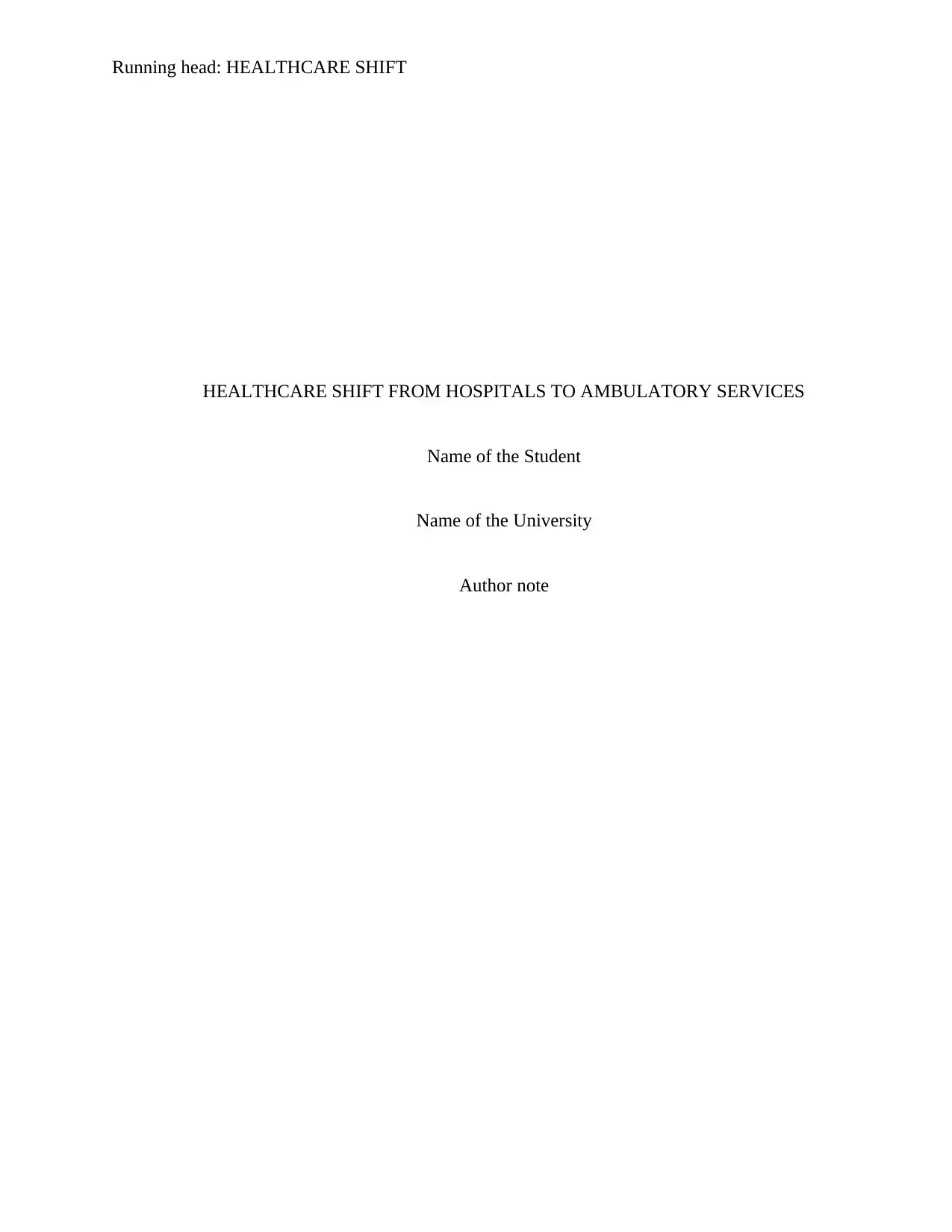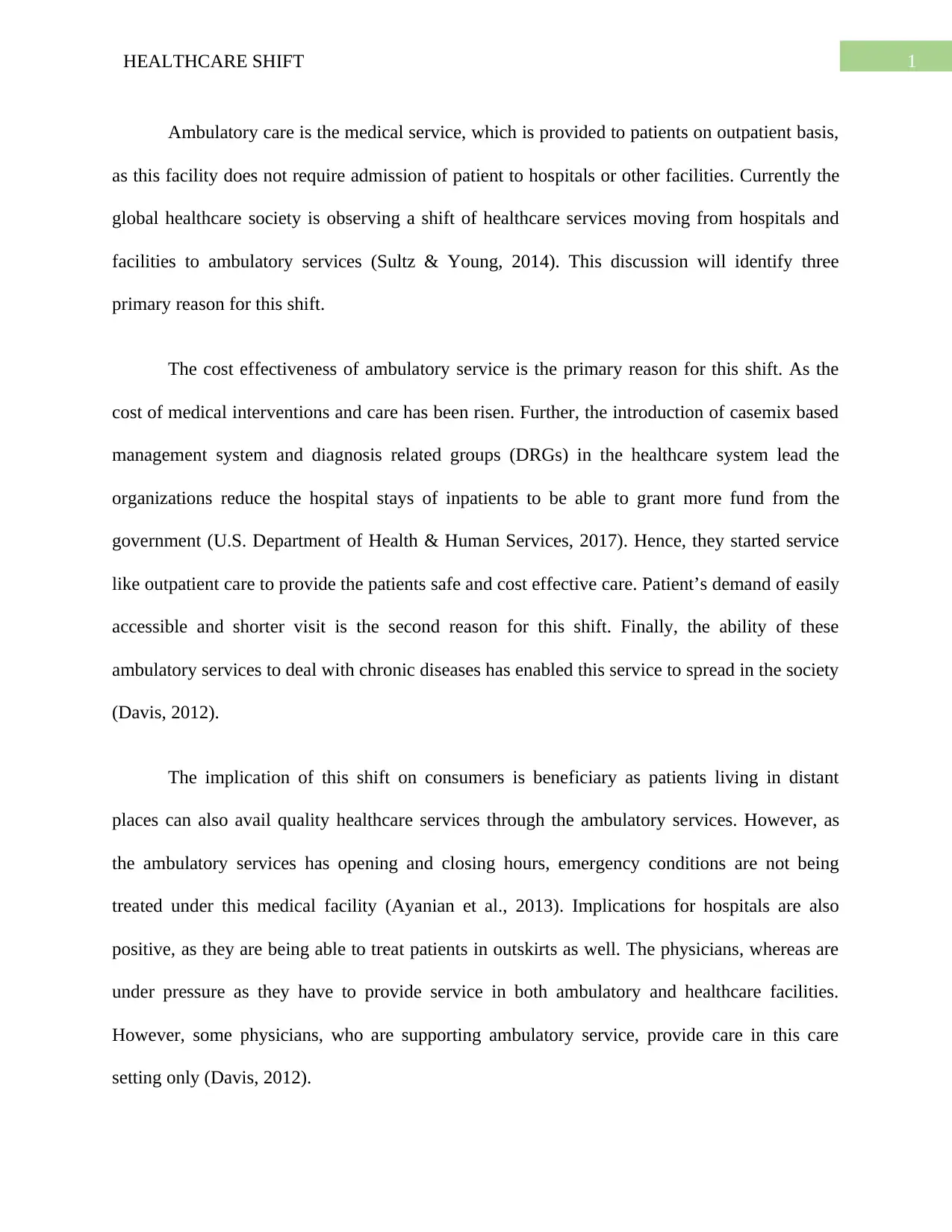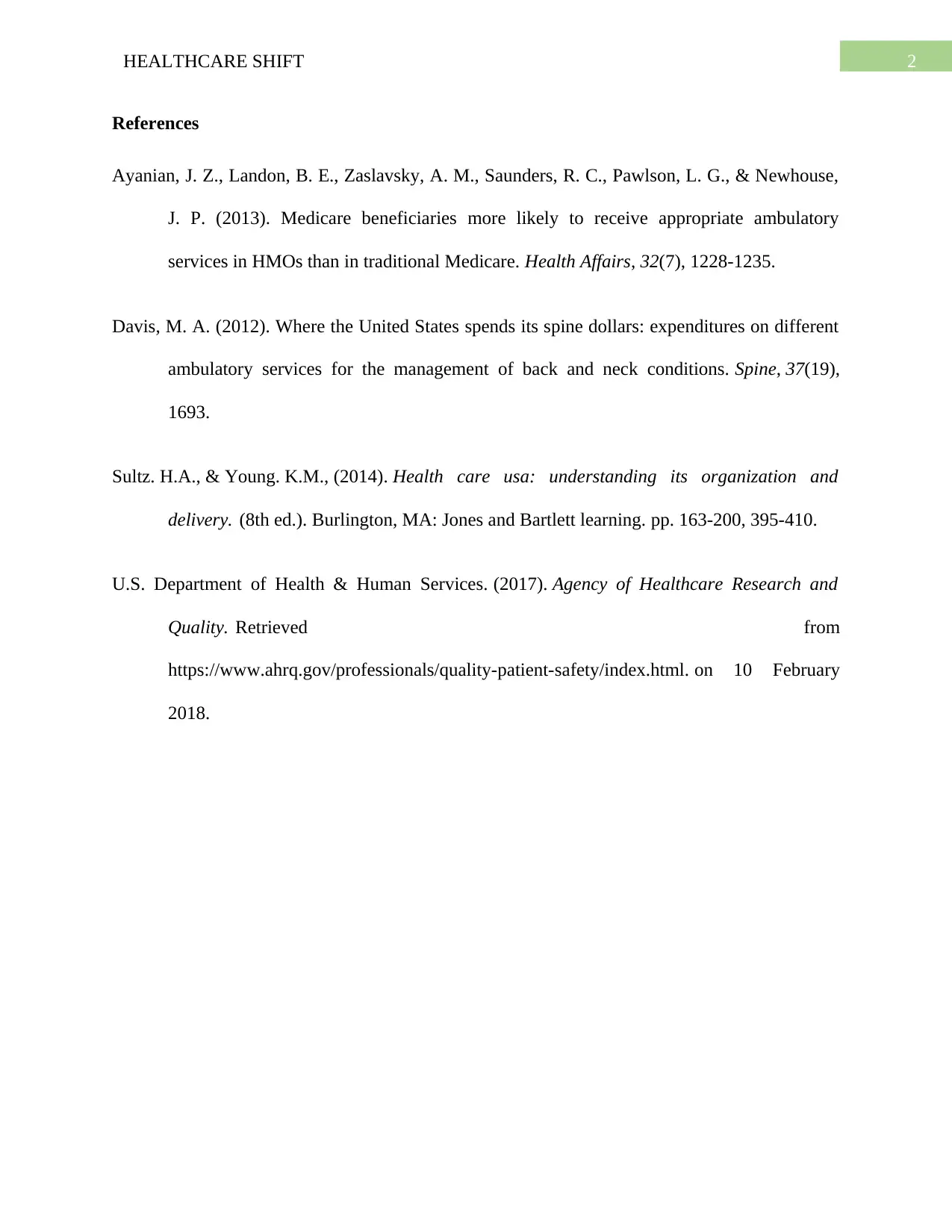The Healthcare Shift: From Hospitals to Ambulatory Service Growth
VerifiedAdded on 2023/06/15
|3
|534
|242
Essay
AI Summary
This essay explores the ongoing shift in the global healthcare landscape from traditional hospital-based services to ambulatory care. It identifies three primary reasons for this shift: the cost-effectiveness of ambulatory services, the increasing patient demand for easily accessible and shorter visits, and the ability of these services to effectively manage chronic diseases. The shift has implications for consumers, offering quality healthcare services to those in distant places, and for hospitals, allowing them to extend their reach. Physicians, however, face pressure to provide services in both ambulatory and hospital settings. The essay concludes by referencing relevant studies and resources that support the analysis of this significant healthcare trend.
1 out of 3










![[object Object]](/_next/static/media/star-bottom.7253800d.svg)